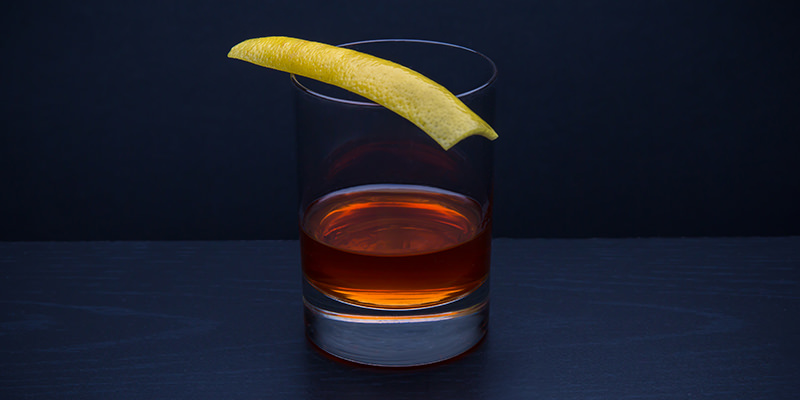The classic Sazerac calls for a sugar cube, rye whiskey – though some sub in Bourbon – Peychaud’ bitters, an absinthe rinse and a lemon peel, right? WRONG. While this is how the drink has been made for decades, it’s not the way the drink was made when it was first invented. That’s because the New Orleanians who were enjoying this newly created cocktail in the 1800s weren’t drinking whiskey, they were drinking Cognac, and that’s how the drink should truly be made.
Legend has it that around 1830 Antoine Amédée Peychaud, a creole apothecary, invented an aromatic bitters formula – which would take his name – that he began mixing in a warm brandy toddy and serving to friends. The drink caught on, and across the city of New Orleans several bars – which at that time were known as coffee houses – started making this new concoction.
One such place that took a liking to the drink was the Merchants Exchange Coffee House, owned by Sewell Taylor. Mr. Taylor wasn’t simply a barman, he was also an importer and around 1850 he became the sole importer of a Cognac made by Sazerac du Forge et Fils. Naturally, being a man about town and an adept salesman, Taylor was able to get his Cognac into a lot of coffee shops and he started subbing it in for the brandy in Peychaud’s concoction.
But because Taylor’s import business was taking off, he didn’t have time to own the coffee shop as well, so he sold it to a friend, Aaron Bird, who renamed the business Sazerac Coffee house, in honor of the Cognac imported by his friend. It’s Bird who gets credit for creating The Sazerac. Adapting the toddy recipe Peychaud had created, Bird rinsed a glass with absinthe, dropped in a sugar cube and then added the Cognac and Peychaud’s bitters – it’s a cocktail that’s a variation of the way many different drinks were made at the time using the simple formula of alcohol, sugar, water, and bitters, which is why as cocktails started becoming more complex, you had some people begin to ask for drinks made the “old fashioned” way.
The Sazerac continued in its original form until 1870 when Aaron Bird sold the coffee shop to Thomas Handy, and the Phylloxera epidemic began to destroy Europe’s vineyards. Phylloxera was an insect that took sustenance from eating the roots of grape vines, and by doing so, it destroyed the plant. Because Cognac, like wine, is made from grapes, the epidemic brought the Cognac industry to a screeching halt. There was barely enough Cognac to go around in Europe, let alone ship over to New Orleans.
But New Orleanians still wanted their Sazeracs so Handy simply replaced the Cognac with rye whiskey. And the switch stuck. Even when Europe finally overcame Phylloxera and the vineyards recovered, whiskey had cemented its status as the main ingredient in the drink. But that’s not what Aaron Bird or Antoine Amédée Peychaud ever intended.
Original Sazerac Recipe:
- 2 oz Cognac*
- .5 oz Absinthe
- 1 sugar cube
- 2 dashes Peychaud’s bitters
Instructions:
Rinse a chilled old-fashioned glass with the absinthe, and set it aside. In a cocktail mixer filled with ice add the cognac, sugar cube and bitters. Stir until cold. Strain into the prepared glass. Add a lemon peel for garnish.
*If you’re a fan of the “traditional” cocktail that uses whiskey, we suggest giving Bache Gabrielsen American Oak Cognac a try. It’s a cognac that is aged in french barrels for at least two years and then finished by aging in American oak barrels from Tennessee for another 6 months. What you wind up with is a Cognac that will satisfy any devout Bourbon drinker.

